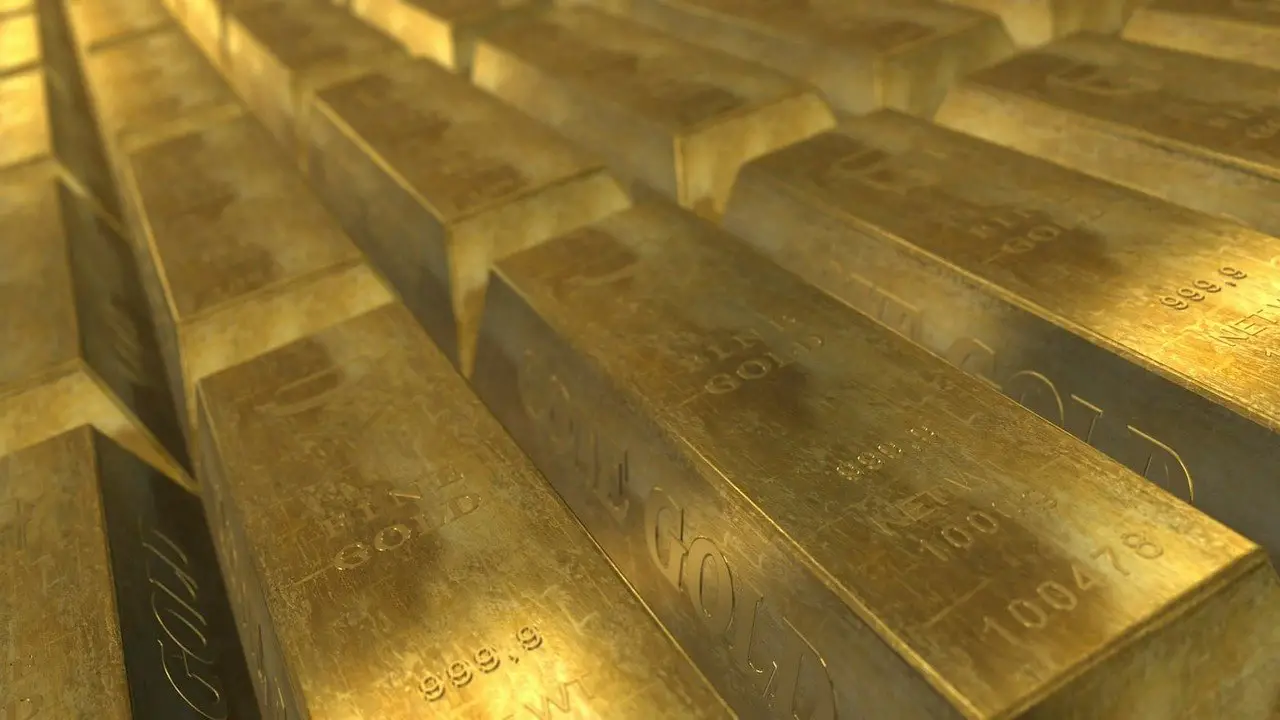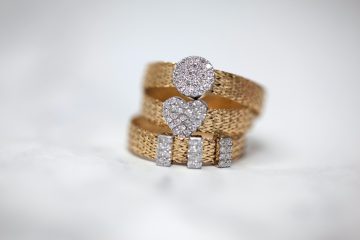
Gold is an element, that is, it consists solely of gold and thus it is not a mixture of other substances. Gold is a precious metal, so it does not oxidize by the air (oxidization) unlike iron (it rust) or copper does.
Furthermore, gold is very resistant to ordinary acids and it is almost not affected at all. There is an acid, however, that bites gold and it is king water, a mixture of 1 part nitric acid and 3 parts hydrochloric acid. Gold can also be dissolved in sodium or potassium cyanide under certain circumstances. These are chemicals that are not playable.
Furthermore, (pure) gold is a fairly soft metal. The hardness is 2 1/2 on Moh’s (10 degrees) scale where lead, which is even softer, is set to 1.
Gold’s malleability is the greatest of all metals. One gram of gold can be pulled out to a 3,000 meter long wire with a diameter of just 0.00012 mm! Gold can further be rolled out to a thin “sheet”, so-called sheet gold, with a thickness of only 0.0001 mm! Gold leaf is so thin that even light can penetrate.
Gold is one of the heaviest metals. The density, density, or specific weight is 19.32. This means that if you fill a 2-liter milk package with gold, for example, it would weigh almost 40 kg! In fact, gold is almost twice as heavy as lead.
The gold’s Latin name is Aurum – which means dawn – and from there the gold has its chemical name (which is AU).
The crystal form of the gold is cubic. But in nature, however, cubic crystals of gold are unusual. Grain and dumplings that are washed out are almost always softly rounded and easily flattened. But there are also other, more unusual forms. For example, so-called “adult gold” or dendritic gold.
The electrical properties of gold are quite unique. The electric potential is high, +1.5 volts. Gold’s ability to conduct electrical current is very good, 42.6 x 106 Siemens / m.
The melting point of gold is 1,063 C.
The gold content is measured in carats or in fineness, pure gold = 24 carats, or 1,000 fine.
Gold can be alloyed (fused) with other metals, such as silver or copper. If the alloy contains 75% gold, the gold content will be 18 carats or 750 fine. If the alloy holds 50% gold, the gold content will be 12 carats or 500 fine. And so on. For ordinary purposes, 24 carats of pure gold is impractical. Therefore, gold is alloyed with copper, for example, so that the alloy becomes more hard and durable. Gold, naturally alloyed with at least 20% silver, is called electrum.
The gold atomic number is 79, its atomic weight is 197 and the oxidation numbers are + I and + III.
Most of all the gold excavated is used for jewelry. A lot is also used in dental care and the rest goes to the electronics industry, among others. In nature, gold appears partly as grains and dumplings in the bottom sediments (in deposits), and partly as rock gold in veins.
In the air, gold weighs 6 – 7 times as much as sand and gravel do. But underwater, gold weighs 10 – 11 times as much as sand and gravel do. This can be explained by the famous principle of Archimedes. This makes it a little easier to wash the gold with water.
The average gold content here on Earth is 3.5 milligrams per tonne. A natural (and usually slightly flat) gold grain, about 0.6 mm in diameter, weighs around 3.5 milligrams.
Our planet contains about 21,000,000,000 tons of gold. It’s not that small, directly. In the earth’s crust, down to about 36 km deep, there are no less than 84,000,000 tons of gold.
One cubic kilometer of seawater contains 3.5 kilos of gold.
At present, about 100,000 tonnes of gold are in circulation. This is “everything” that has so far been broken and washed out. This corresponds to a gold cube with 17-meter sides. (17 x 17 x 17 m.)
Interesting facts about gold
A gold nugget – Holtermann nugget – found in Australia, weighed just over 285 kilos, of which 93 kilos was pure gold.
1. The world’s largest gold bar weighs 250kg (551 lb).
2. Gold has been discovered on all continents on earth.
3. Our bodies consist of 0.2 mg of gold, most of it in our blood.
4. More gold can be recovered from a ton of computers than from 17 tonnes of gold ore.
5. The Olympic gold medal contains only 1.34% gold.
6. The ocean contains almost 20 million tons of gold.
7. The world breaks more steel in an hour than gold has made since the beginning of history writing.
8. Almost all of the gold comes originally from meteorites that hit the earth 200 million years after its emergence.
9. 24-carat gold has a melting point at 1063 ° C or 1945 ° F.
10. Almost half of all gold ever mined comes from one place: Witwatersrand, South Africa.
11. Indian housewives are said to own 11% of all the gold in the world. This is more than what the US, IMF, Switzerland, and Germany have together in their gold reserves.
12. The world’s most valuable coin that is valid payment is an Australian coin with a face value of $ 1 million. Since it weighs 1000kg and consists of 99.99% pure gold, the gold value amounts to USD 45 million.
13. An estimated 52000 tonnes of breakable gold remain in the ground, worth USD 2 trillion.
14. In 2015, Apple recovered 2204 pounds (about 999 kg) of gold from broken iPhones. It is worth about USD 40 million.
15. NASA estimates that the Earth’s nearby asteroid Eros contains 20 billion tons of gold.
16. The chemical term for gold is Au, which comes from the Latin word for gold – aurum, which means “shining sunrise” or “the light of dawn”. The word gold comes from the Germanic language and derives from the Germanic word gulþ and the Indo-European word ghel, which means “yellow/green”. The element has been known since ancient times.
17. Gold is a high-density heavy metal but is generally not considered toxic. Leaf gold in food and drink can, therefore, be consumed.
18. Gold has many uses besides its monetary and symbolic value. It is used in electronics, electrical wiring, dental care, medicine, radiation protection, and when staining glass.
19. Gold is used in window glass and in Australian helmets to reflect away infrared rays while allowing sunlight to pass through, but still keeping it cool.
20. Gold can be chemically converted into fluid and injected into the muscles of the thousands of people suffering from rheumatism. In the United States, treatment is said to be successful in seven out of ten patients.



